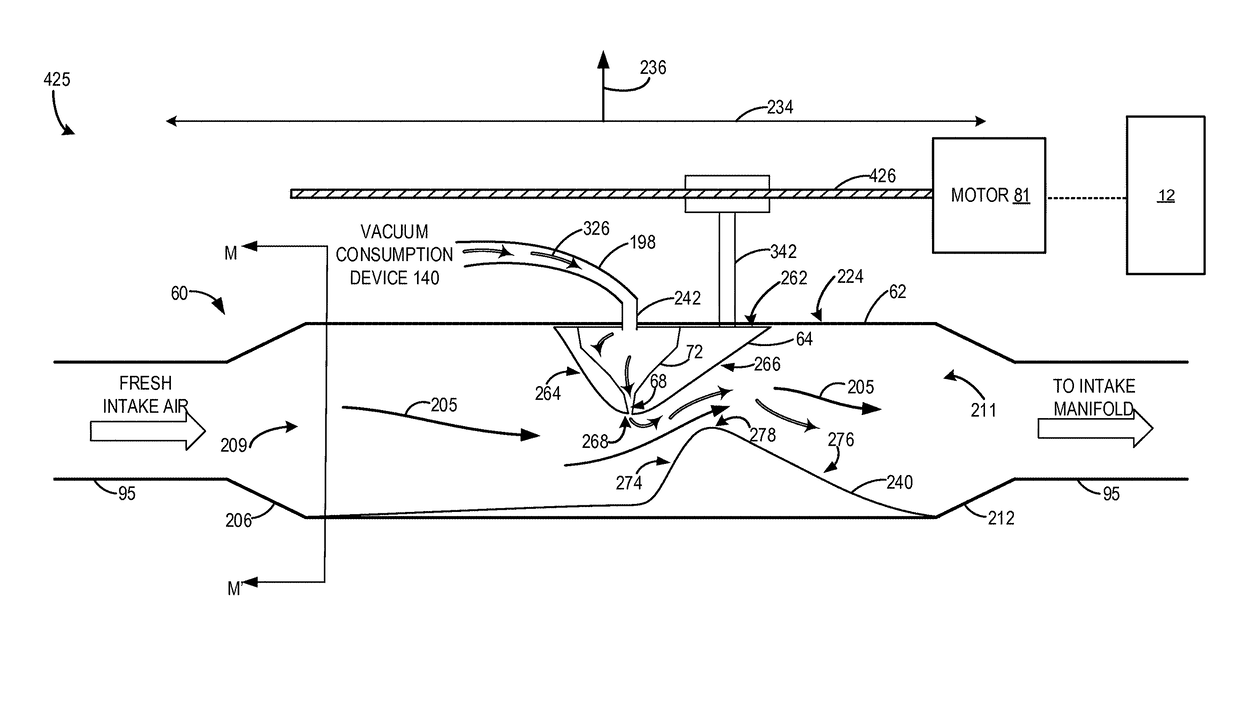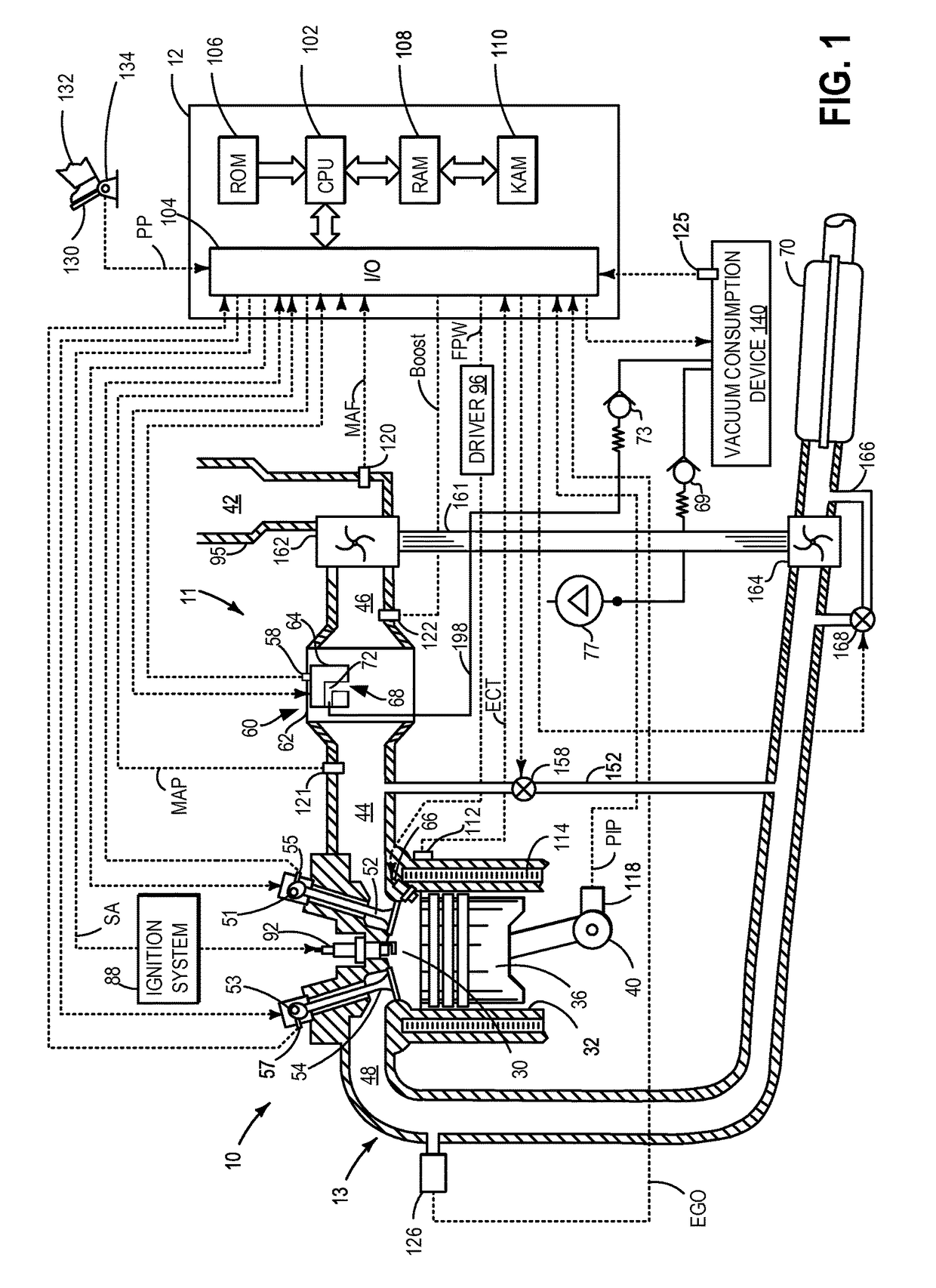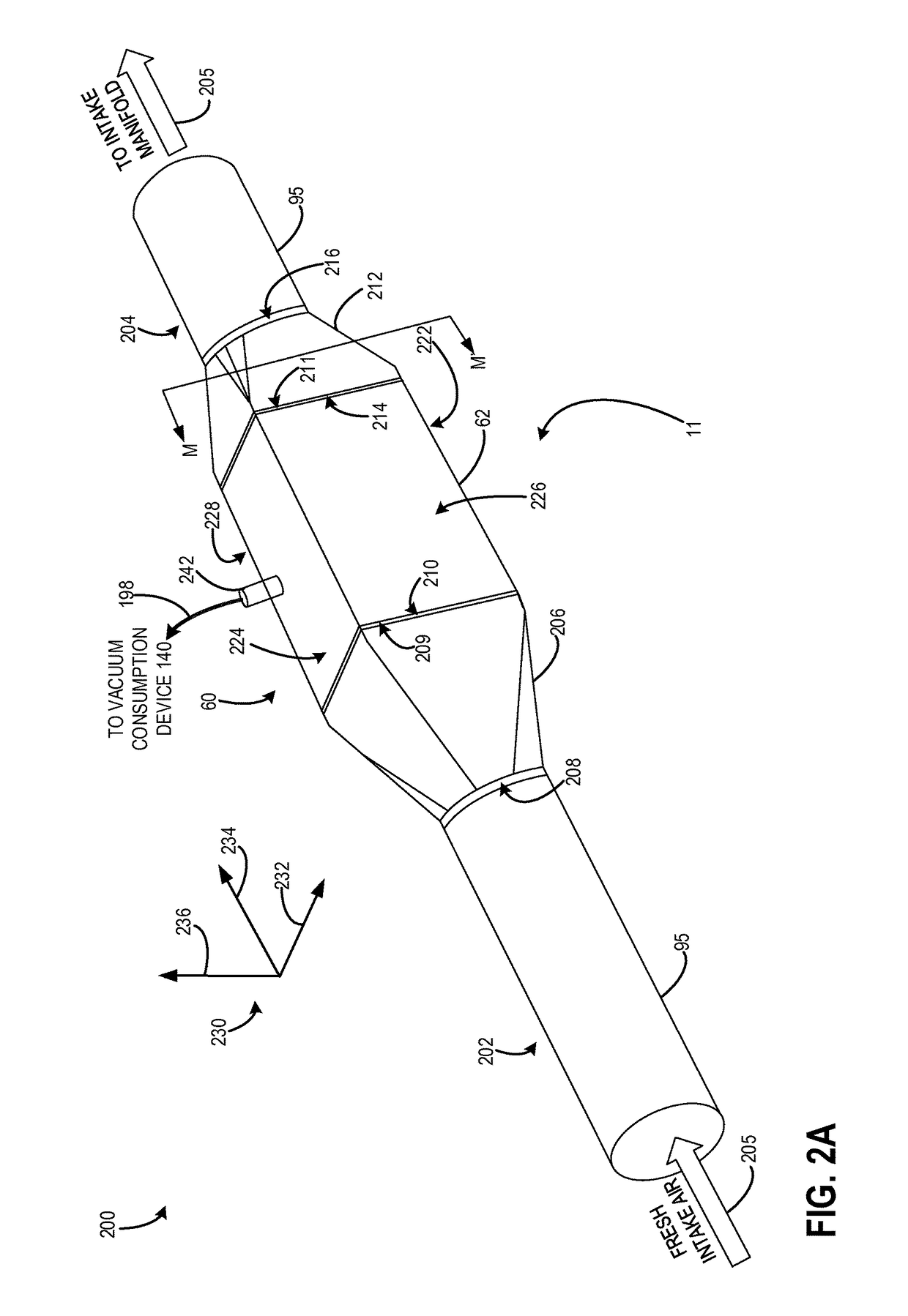Method and system for vacuum generation using a throttle body comprising a slidable throttle valve
a technology of vacuum generation and throttle body, which is applied in the direction of electric control, combustion air/fuel air treatment, machines/engines, etc., can solve the problems of limited vacuum generation increased related expenses, and additional expenses, so as to achieve limited vacuum generation potential of the throttle, the effect of limited vacuum generation potential and limited perforation siz
- Summary
- Abstract
- Description
- Claims
- Application Information
AI Technical Summary
Benefits of technology
Problems solved by technology
Method used
Image
Examples
embodiment 400
[0079]FIG. 4A shows an embodiment 400, where throttle valve 64 is in the open first position. Airflow through the throttle body 62 may be greater with the throttle valve 64 in the open first position than any other throttle position. Thus, the position of the throttle valve 64 shown in FIG. 4A may be referred to as a fully open position. Throttle valve 64 may not overlap with the flange 240. More precisely, a given cross-section of the throttle body 62 taken along the vertical axis 236, may not include both the flange 240 and throttle valve 64, when the throttle valve is adjusted to the open first position. Said another way, no portion of the throttle valve 64 may be positioned over any portion of the flange 240. However, in other examples, some overlap between the throttle valve 64 and the flange 240 may exist in the open first position. As such, a narrowing of the throttle body 62 may be less in the open first position, than more closed positions, and airflow through the throttle ...
embodiment 425
[0080]FIG. 4B shows an embodiment 425, where the throttle valve 64 is displaced downstream in the throttle body 62 along the longitudinal axis 234, relative to the open first position shown in FIG. 4A to an intermediate third position. As such airflow through the throttle body 62 may be less in the third position than in the open first position. However, an amount of vacuum generated at the tip 268 of the throttle valve 64 may be greater at the third position than the open first position. Thus, an amount of gasses drawn from the vacuum consumption device 140 into the throttle body 62 may be greater in the third position than the open first position as shown by the increased number of flow arrows 326 in FIG. 4B relative to FIG. 4A. In the intermediate third position, the throttle valve 64 may overlap with the flange 240. That is, a given cross-section of the throttle body 62 taken along the vertical axis 236, may include both the flange 240 and throttle valve 64, when the throttle va...
embodiment 450
[0081]FIG. 4C shows an embodiment 450, where the throttle valve 64 is displaced downstream in the throttle body 62 along the longitudinal axis 234, relative to the open first position and intermediate third position shown in FIGS. 4A and 4B, to the closed second position. As such airflow through the throttle body 62 may be less in the closed second position than in the open first position and intermediate third position. However, an amount of vacuum generated at the tip 268 of the throttle valve 64 may be greater at closed second position than the open first position and intermediate third position. Thus, an amount of gasses drawn from the vacuum consumption device 140 into the throttle body 62 may be greater in the closed second position than the open first position and intermediate third position as shown by the increased number of flow arrows 326 in FIG. 4C relative to FIGS. 4A and 4B.
[0082]In the closed second position, the throttle valve 64 may fully overlap with the flange 240...
PUM
 Login to View More
Login to View More Abstract
Description
Claims
Application Information
 Login to View More
Login to View More - R&D
- Intellectual Property
- Life Sciences
- Materials
- Tech Scout
- Unparalleled Data Quality
- Higher Quality Content
- 60% Fewer Hallucinations
Browse by: Latest US Patents, China's latest patents, Technical Efficacy Thesaurus, Application Domain, Technology Topic, Popular Technical Reports.
© 2025 PatSnap. All rights reserved.Legal|Privacy policy|Modern Slavery Act Transparency Statement|Sitemap|About US| Contact US: help@patsnap.com



